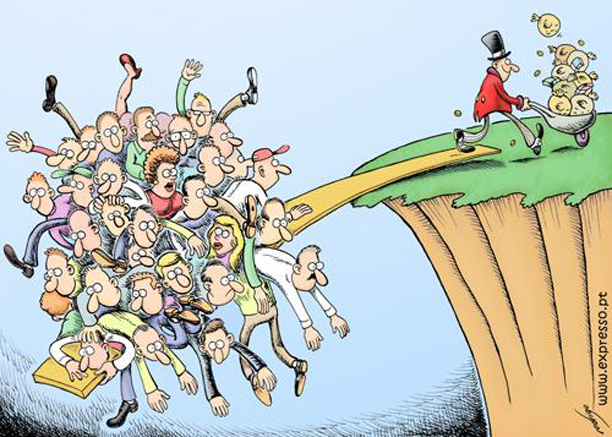
Rising income and wealth inequality, a central economic truth of our time.
It is a rare moment when the financial press offers an unflattering picture of the way the global economic system works – or doesn’t work.
But that’s what Financial Times has done in the light of recent figures released by the US Federal Reserve Board.
Around the world, there is a growing gulf between the super-rich – the top 1% - and the rest. This, says the Times, is a “central economic truth of our times”.
The US figures show that the nation as a whole is richer than ever before. Total US net worth has risen to a record US$81.8 trillion, up US$1.5 trillion in the first quarter of 2014 and up nearly US$13 trillion compared to the previous peak, before the 2008 financial crash.
But that’s where the good news ends.
The fact is that the majority of that increase in wealth flowed to the super-rich in the form of higher share prices and rising property values. Figures show for instance, that the sale value of the top 1% of properties in the US rose 21 percent in the first 4 months of this year, while the sale value of the remaining 99 percent of homes have fallen 7.6 percent.
These facts help explain why an increasing number of US families struggle to make ends meet even when the official statistics suggest that the US, taken as a whole, is getting richer.
In fact while total household wealth has risen 43 percent since the depths of the economic slump in 2008, there has been an actual decline in median household income, down 7.6 percent since the same time. That in turn reflects the decline in the real value of wages and the growth of low paid jobs over the same period.
In short, recent policies pursued in the US – and around the world - designed to prop up stock markets, banks and the global financial system have largely benefited the already wealthy rather than stimulating overall growth.
As the American Dream fades, these trends are a warning to Australian working people of what lies ahead under the Abbott government.










